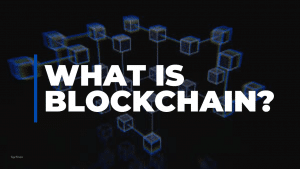Post Views: 35
Key Takeaways
- Filecoin (FIL) is a cryptocurrency and a storage network designed to store important information in a decentralized and censorship-resistant manner.
- It aims to create a more efficient and cost-effective solution for storing data compared to traditional centralized cloud storage providers.
- Filecoin’s protocol is designed to be resistant to censorship and data loss, providing a robust and resilient infrastructure for storing sensitive information.
What Is Filecoin (FIL)?
Filecoin is an open-source, decentralized storage network built on blockchain technology. It allows users to store and retrieve data in a secure and censorship-resistant manner.
Filecoin was founded by Juan Benet, who is also the creator of the InterPlanetary File System (IPFS), a peer-to-peer hypermedia protocol designed to make the web faster, safer, and more open. Benet also founded Protocol Labs, the organization behind both projects, with the aim of creating protocols that enable a more decentralized and resilient Internet infrastructure.
The project began in 2014, with the initial coin offering (ICO) happening in 2017. The mainnet officially launched in late 2020. Filecoin raised over $250 million through its ICO, making it one of the largest token sales at the time. Some notable investors include Andreessen Horowitz, Sequoia Capital, Union Square Ventures, and Winkelvoss Capital.
How Does Filecoin (FIL) Work?
Filecoin is a decentralized storage network powered by its native cryptocurrency, FIL. Here’s a breakdown of how it works:
Imagine a marketplace where anyone can rent out unused storage space and others can pay to store their data securely and reliably. That’s essentially what Filecoin does:
The Players:
- Users: Individuals or organizations who need to store data. They pay FIL to miners for storage and retrieval.
- Storage Miners: These are individuals or businesses offering their storage space on the network. They earn FIL by storing data reliably and proving they do so over time.
- Retrieval Miners: These miners help with faster data retrieval and content delivery services, also earning FIL in the process.
The Process:
- Users: upload their data and specify storage duration and desired replication (copies) for redundancy.
- Market: The Filecoin network matches user demands with storage providers based on price, location, and other factors.
- Storage Deals: Users and miners agree on a storage deal, locking FIL as collateral.
- Proofs: Miners store the data and regularly submit cryptographic proofs to the network demonstrating its safekeeping.
- Rewards: Upon successful proof verification, miners receive FIL rewards, and collateral is released back to users.
- Retrieval: When users need their data back, they pay retrieval miners FIL for faster access.
Filecoin (FIL) Token And Tokenomics
The release of FIL tokens is designed to be inflationary in the early years of the network, in order to incentivize storage providers to join the network. The inflation rate will gradually decrease over time until it reaches zero in about 50 years. Filecoin’s current circulating supply is 511.54 million FIL. The current yearly supply inflation rate is 56.61% meaning 184.79M FIL were created in the last year.
Token Details
Total Supply 1,960,858,776 FIL
Circulating Supply 519,376,112 FIL
Current Price $10.18
Market Capitalization $5,286,124,260
This information is current as of March 6th, 2024. Please note that the token’s price, market value, and available supply may fluctuate.
Distribution:
The total supply of FIL tokens is capped at 2 billion. The tokens are allocated as follows:
- 55% to storage mining allocation
- 15% to the mining reserve
- 10.50% to Protocol Labs
- 7.50% to fundraising (SAFT 2017)
- 5.00% to Filecoin Foundation
- 4.50% to PL Team & Contributors
- 2.50% to fundraising (remainder)
Where Can I Buy Filecoin (FIL)?
Filecoin (FIL) is available on several cryptocurrency exchanges:
- Coinbase: A popular and user-friendly exchange that allows you to buy cryptocurrencies with various payment methods, including bank transfers, debit cards, and wire transfers.
- Binance: Another major exchange with a wide range of cryptocurrencies, including FIL. Binance offers multiple ways to buy crypto, including using credit cards, debit cards, and peer-to-peer (P2P) trading.
- KuCoin: A smaller exchange is known for its competitive fees and support for a large number of cryptocurrencies.
Please note that availability may vary depending on your location and the regulations in your country. Always make sure you are using reputable and secure exchanges when buying cryptocurrencies, and consider storing your FIL tokens in a secure wallet for added security.
Still struggling to find FIL? Head over to CoinMarketCap, search for “Filecoin (FIL),” and explore the “Markets” tab. This will reveal a list of exchanges where the token is actively traded, allowing you to compare options and find the one that best suits your preferences.
Is Filecoin (FIL) A Good Investment?
Whether Filecoin (FIL) is a good investment for you will heavily depend on your investment goals and risk tolerance. Here’s a quick overview:
Pros:
- Unique value proposition: Filecoin offers a decentralized storage solution, which could be a disruptive force in the traditional data storage industry. This could lead to increased demand for FIL tokens in the future.
- Growing ecosystem: The Filecoin ecosystem is expanding with new projects and partnerships, such as Solana, being built. This could lead to wider adoption and increased demand for FIL.
- Riding the DePIN wave: If the decentralized physical infrastructure networks ((DePIN) narrative gains traction and attracts significant investment, FIL, as a leading player in decentralized storage, could benefit from increased awareness and demand.
Cons:
- Competition: The decentralized storage landscape is not limited to other blockchain-based projects like Arweave (AR). Traditional cloud storage giants like Amazon Web Services (AWS) and Microsoft Azure are also expanding their AI-powered storage solutions. This competition could limit Filecoin’s market share and user base.
- Tokenomics: Filecoin’s tokenomics have been criticized for their potential to negatively impact the price of FIL. For example, a large portion of tokens (around 50%) were pre-mined and are gradually vesting, which could lead to significant selling pressure in the future.
- Regulatory uncertainty: The regulatory landscape for cryptocurrencies is still evolving, and any changes could negatively impact the price of FIL and the viability of the entire decentralized storage ecosystem.
Ultimately, investing in this asset class is inherently risky. Do your own research, understand the risks, and never invest more than you can afford to lose.
Final Thoughts
While Filecoin’s innovative approach and growing ecosystem signal potential for disruption in the industry, investors should carefully consider the competitive landscape, tokenomics, and regulatory uncertainties before making investment decisions. Despite the risks inherent in this nascent asset class, Filecoin’s unique value proposition and expanding ecosystem position it as a significant player in the evolving landscape of decentralized storage solutions.
Via: 2Usethebitcoin.com










